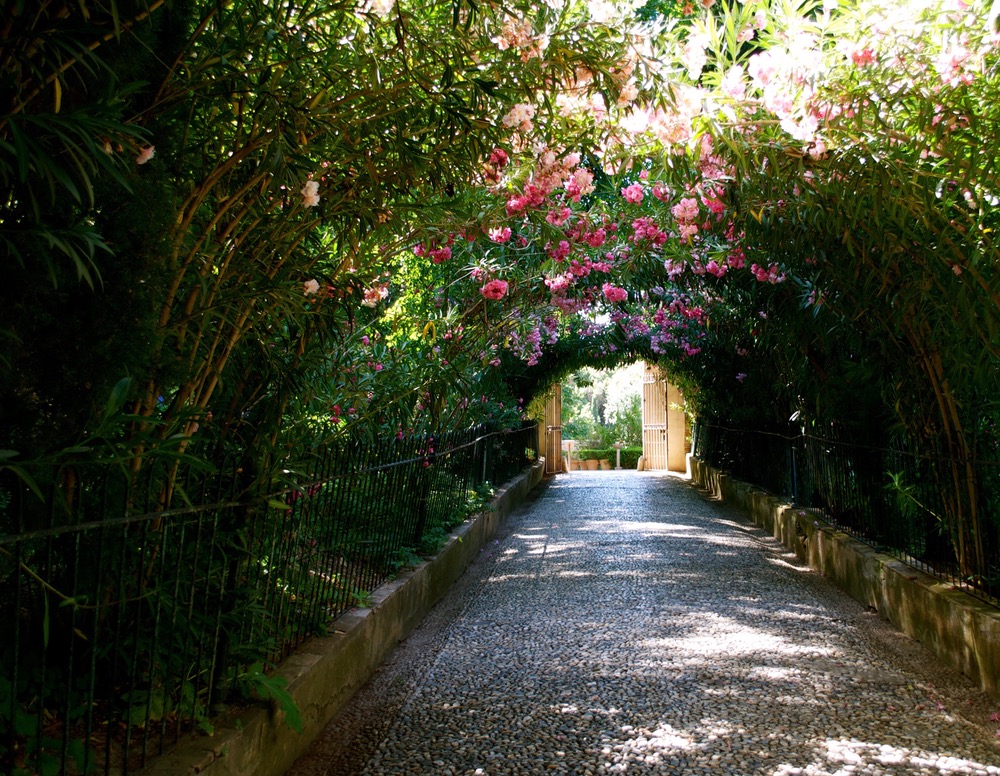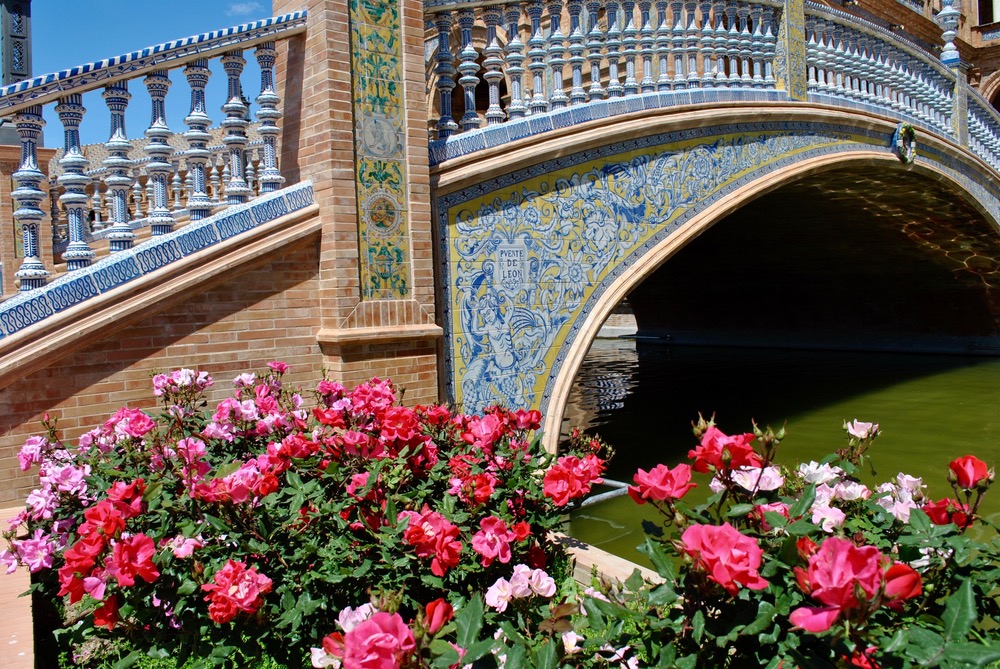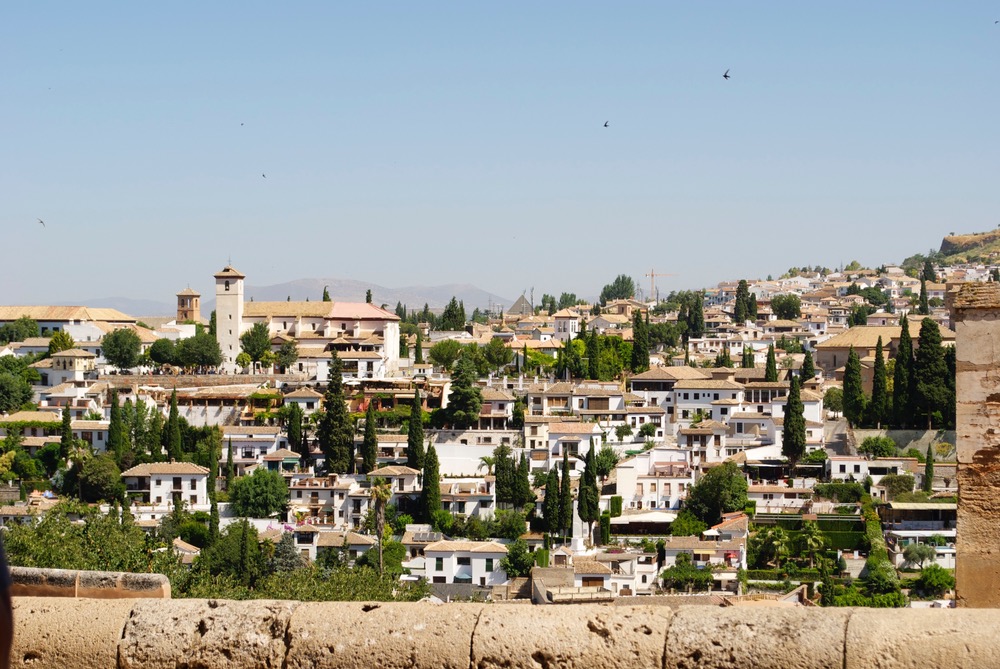
vie-magazine-southern-spain
¡Bienvenidos!
Beauty Abounds in Southern Spain
Story and photography by Hannah Myer
Spain welcomes you warmly. She invites you in and asks for your eyes to see the way the sun washes over and illuminates the white villages and flowers of every hue. She asks for your ears to hear her music and her native tongue. She asks you to take in the perfume of orange blossoms and the aroma of paella wafting from plates on restaurant patios. She asks you to taste and notice the complexities of her prized olive oils and wines. She asks you to feel as easygoing as the Guadalquivir River flows—but also as enthusiastic as the flamenco dancer with each step. And finally, you may find that she asks for your heart because Spain is nothing if not pulsing with passion.
The provinces of southern Spain contain the epitome of all the things that come to mind when one thinks about this captivating country. Bullfighters and late-night tapas? Check. Flashy fiestas and costumes? Check. Colorful ceramics and flowers? Check. And yes, every day at two o’clock in the afternoon, entire cities shut down for the daily siesta.
Centuries of invasions have left their mark on this part of the world. Periods of expansion have given way to periods of war and back around again in cycles of building up and breaking down. Today, the region is thriving, and the evolution of its monuments and intentional efforts to honor the country as a whole profoundly display the beauty that can come from a messy conglomeration of historical conquests. As Ernest Hemingway said, “The world breaks everyone and afterward many are strong at the broken places.”

Seville is the capital of the province of Andalusia, located in southwestern Spain, and this two-thousand-year-old city is known for its joyful personality. As the home of the weeklong Feria de Abril and the birthplace of tapas, Seville is a hub for Spanish culture.
Just inside the city center, a giant crosshatch optical illusion flows above the streets of Plaza de la Encarnación. The modern structure is commonly known as Las Setas, or “the Mushrooms,” but it is formally called the Metropol Parasol. Made completely of wood, it houses a museum dedicated to archaeological findings revealed during excavations, a farmers market, bars and restaurants, and panoramic terraces that offer stellar views of the city.
Continuing south through the city will lead to the Catedral de Santa María de la Sede, which is notably the largest Gothic cathedral in the world. Visitors can marvel at the impressive interior and make their way to the Giralda, a bell tower that was originally built in the twelfth century as a Muslim minaret. Almost two centuries and a series of wars later, Roman Catholic Church leaders decided to construct a cathedral around the Moorish sections and turned the tower into a belfry. Thirty-four stories of ramps rise to the top, where the view is sensational. A crystal blue sky flies beautifully over a panorama of pearly white buildings with terra-cotta roofs and terraces with swimming pools glinting in the sunlight. A bullring stands out among the houses in the west.
As the home of the weeklong Feria de Abril and the birthplace of tapas, Seville is a hub for Spanish culture.
Back on the ground again, Seville’s cobblestoned streets may seem to have no rhyme or reason to a visitor, but the maze is an enchanting one. The Parque de María Luisa is no less captivating, and as Seville’s main green space, the park resembles a type of paradise with its lush gardens, colorful flowerbeds and variety of trees. The tiled fountains and ponds resemble oases. Being a student, I even had the audacity to dip my toes in the water.
The northernmost corner of the park opens up into an expansive space that contains the Plaza de España. This edifice stands proudly as it curves around a pristine canal. Four bridges decorated with brightly painted ceramics take visitors from the large courtyard over the canal where small boats pass underneath. Benches line the walls of the canal to represent each province of Spain, further demonstrating the area’s cultural pride.
East of Seville, another southern Spanish treasure awaits exploration. The city of Granada sits at the foot of the Sierra Nevada mountain range and is less than fifty miles from the Mediterranean coast. Granada also experienced a vicious cycle of invasion and war, and it was the last Muslim area of Andalusia to fall to the Christians in 1492. The city’s upwardly winding cobblestoned streets showcase the long Muslim history. Arabic tearooms are tucked away, and Moorish boutiques overflow with decorative textiles, colorful ceramics, and leather products.
Arabic tearooms are tucked away, and Moorish boutiques overflow with decorative textiles, colorful ceramics, and leather products.
Theaters where flamenco dancers take the stage can also be found within Granada’s walls. The flamenco dance is deeply artistic and showcases Spain’s passion and depth of emotion with brilliance. The dance is originally Andalusian, though it is found in many other parts of Spain and the world, and is improvised based on a handful of simple movements. The show I witnessed as a student included only a man, a woman, a singer, and a guitarist on the small stage, which enhanced the intimacy and intensity of their art. The troubles and joys of life are found in each stomp of their feet, clap of their hands, and swift movement of their bodies.
As the narrow streets continue upward, there is an open landing where tourists and locals gather along a cement wall to take in an astounding view of the city. This same view would give me my first glimpse of the Alhambra. At dusk, the enormous castle glows red from a distance as the blue of the sky deepens.
Similar to Seville’s cathedral, the Alhambra underwent much architectural evolution. The structure was initially built as a military fortress until the Nasrid dynasty, the last Muslim dynasty in Spain, rebuilt the original ruins into their idea of “heaven on earth.” More portions were added during the spread of Christianity in the fifteenth century, creating another blend of historic influence in Spain.

I still feel gratitude for the kind spirit of the Spanish people and their love for their home country.
Visitors can weave in and out of the elaborate Generalife gardens and explore the interior of the fortress. It is built in Moorish style, and intricate arabesque patterns line the walls and ceilings. Arched windows provide splashes of accentuating light and views of the whitewashed houses of the Albaicín quarter. The preservation and restoration of these details are impressive, though what is left today is only a fraction of what stood before the atrocities of war in the nineteenth century and the effects of an earthquake in 1821. Many poems and stories have been written about the palace and its history, including a collection by Washington Irving, which provided the key to the Alhambra’s global fame.
While Irving’s last view of Granada was accompanied by the sunset, my last view was of the sunrise peeking over the mountains. Irving wrote, “I will hasten from this prospect before the sun is set. I will carry away a recollection of it clothed in all its beauty.” My sentiment for southern Spain is as such, and today I still feel gratitude for the kind spirit of the Spanish people and their love for their home country. I often think about the warmth of the sun on my skin and the colorful array of flowers springing up from Spain’s life-giving soil. I hope to return someday, but until then, these pleasurable memories will be sweet companions.
— V —
Share This Story!
KEEP UP WITH THE LATEST STORIES FROM VIE



























































































































































